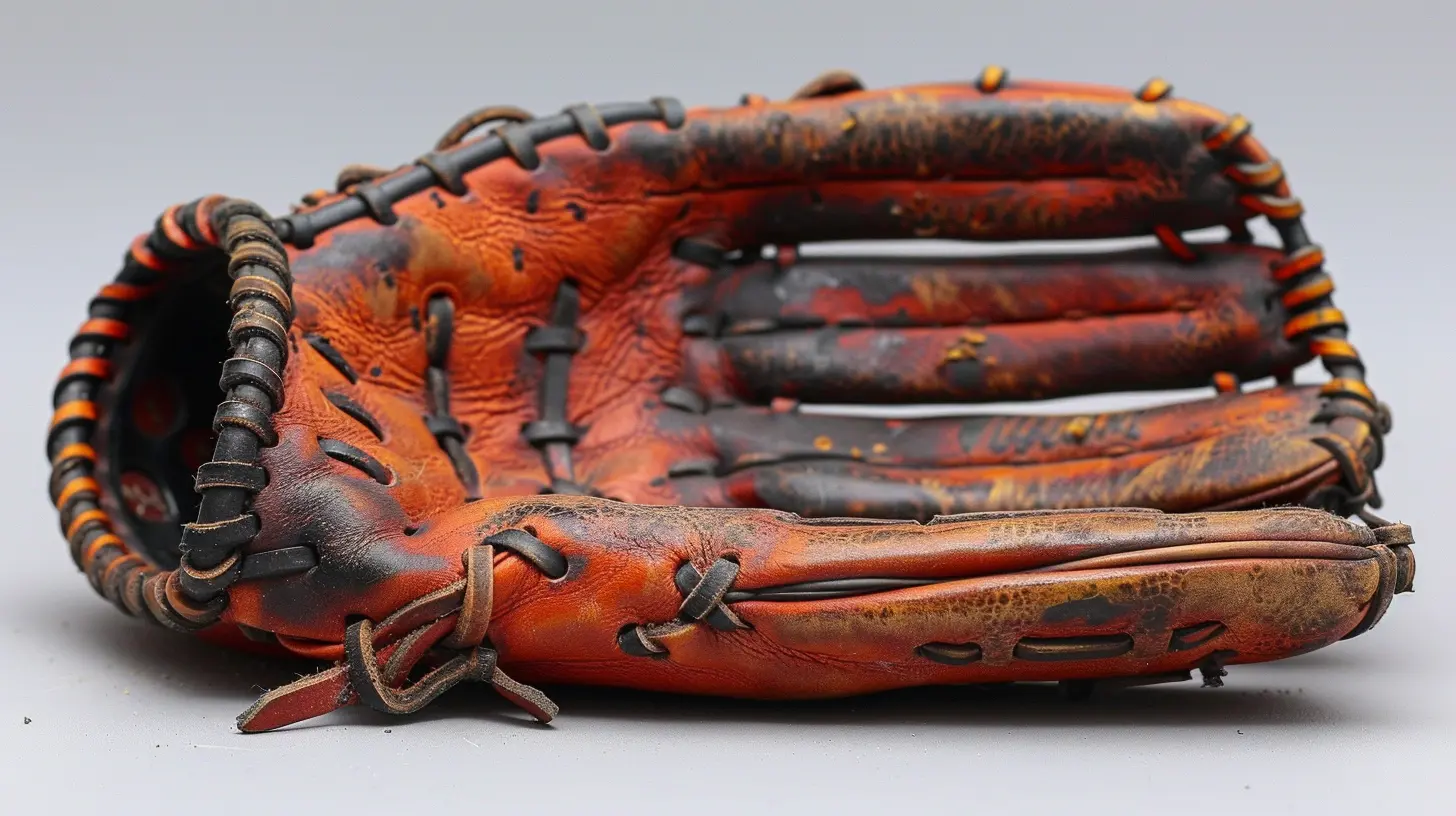Best Baseball Gloves for Fielding and Comfort
21 November 2025
When it comes to baseball, the right glove can make all the difference. Whether you're a seasoned pro or just starting out, having the best baseball glove for fielding and comfort is crucial. Trust me, a good glove isn't just about style; it's about performance. Imagine trying to catch a fastball with a stiff or uncomfortable glove. Not fun, right? That's why we're going to dive deep into what makes a top-quality baseball glove and help you find the perfect fit for your game.
In this article, we'll break down the best baseball gloves for fielding and comfort, highlighting the top choices across different positions, materials, and price ranges. By the time you're done reading, you'll know exactly what to look for, so you can step onto the diamond with confidence.

Why Choosing the Right Baseball Glove Matters
First things first, let’s talk about why a good glove is so important. A baseball glove isn't just another piece of gear—it's an extension of your hand. It needs to feel like a natural part of you so you can make those quick, precise plays. Whether you're snagging a line drive, scooping up a grounder, or stretching for that game-saving catch, the right glove can make or break the play.But here’s the thing: not all gloves are created equal. Some are built for specific positions, while others are designed with comfort in mind. That’s why it’s essential to find a glove that fits your needs and your hand perfectly.

What to Consider When Buying a Baseball Glove
Before we jump into specific recommendations, it’s important to know what to look for when shopping for a glove. Here are some key factors to keep in mind:1. Position-Specific Gloves
Different positions on the field require different gloves. A glove designed for an outfielder won’t work well for a shortstop, and vice versa. Let’s break it down:- Infield Gloves: These gloves are generally smaller with a shallow pocket, designed for quick transfers and fast throws. The smaller size allows for better control when fielding grounders and making plays.
- Outfield Gloves: Outfielders need gloves with deeper pockets to catch fly balls and line drives. These gloves are usually larger to give you more reach and stability.
- First Base Mitts: First basemen use specialized mitts with a deep pocket and a unique shape. They’re built for scooping throws out of the dirt and catching high throws.
- Catcher’s Mitts: Catcher’s mitts are heavily padded and have a rounded shape to handle fast pitches and foul tips. Comfort is key here, as catchers are constantly taking a beating behind the plate.
- Pitcher’s Gloves: Pitchers often use gloves with closed webs to hide their grip on the ball. These gloves are typically more about comfort and less about fielding precision since pitchers don’t field as much.
2. Material
Baseball gloves are made from a variety of materials, and each has its pros and cons. Here’s a quick rundown:- Leather: High-quality leather gloves are the go-to for serious players. They’re durable, mold to your hand, and offer the best performance. However, they require a break-in period and can be pricier.
- Synthetic Leather: If you’re looking for an affordable option, synthetic leather gloves are a good choice. They don’t require much break-in time and are great for beginners, but they don’t last as long as real leather.
- Mesh: Some gloves feature mesh backs for added flexibility and breathability. These are lighter and great for players who prefer a quicker, more agile glove.
3. Fit and Comfort
Comfort is key when it comes to baseball gloves. You’ll be wearing it for hours at a time, so it should fit snugly but not too tight. Look for adjustable wrist straps or laces that allow you to customize the fit. Also, don’t forget about padding—especially if you’re playing catcher or first base. The more comfortable you are, the better you’ll perform.4. Break-In Time
A new glove might feel stiff right out of the box, but with proper break-in, it will become easier to use. Leather gloves, in particular, require a break-in period to mold to your hand. Some players use glove oil, while others prefer to simply play catch until the glove softens up. Either way, don’t expect a brand-new glove to feel perfect right away.
Best Baseball Gloves for Fielding and Comfort
Now that we know what to look for, let’s dive into some of the best baseball gloves currently available. We’ll cover a range of gloves that cater to different positions and budgets, so you can find something that fits your needs.1. Rawlings Heart of the Hide
If you’re serious about baseball, you’ve probably heard of the Rawlings Heart of the Hide series. These gloves are like the Cadillac of baseball gloves—luxurious, durable, and built to perform. Made from high-quality steerhide leather, these gloves are designed to mold perfectly to your hand over time. Yes, they require a bit of a break-in period, but once they’re broken in, they feel like an extension of your hand.Best For: Infielders and outfielders looking for top-tier performance.
Key Features:
- Steerhide leather for durability.
- Excellent pocket depth for fielding.
- Customizable fit with adjustable laces.
2. Wilson A2000
The Wilson A2000 is another top contender in the baseball glove world. This glove is known for its durability and comfort, made from Pro Stock leather that’s built to last. It’s a favorite among professional players, and for good reason—it offers a great balance of flexibility and sturdiness. Plus, it comes in various models tailored to specific positions, so you can find the perfect glove for your role on the field.Best For: Players of all positions who want a high-quality glove that lasts.
Key Features:
- Pro Stock leather for long-lasting performance.
- Dual-welting for added pocket stability.
- Available in various sizes for different positions.
3. Mizuno Pro Series
If you’re looking for a glove that combines both luxury and performance, the Mizuno Pro Series is worth a look. These gloves are handcrafted from the finest leather and offer exceptional comfort and feel. Mizuno is known for its attention to detail, and these gloves are no exception. The thumb and pinky slots are reinforced for added durability, and the glove’s structure is designed for optimal performance.Best For: Players who value craftsmanship and comfort.
Key Features:
- Handcrafted leather for a premium feel.
- Reinforced thumb and pinky slots for durability.
- Soft interior lining for added comfort.
4. Easton Professional Collection
Easton’s Professional Collection gloves are an excellent choice for players who want a balance of affordability and performance. Made from premium cowhide leather, these gloves are durable yet comfortable. They also come with padded finger linings for extra comfort, making them a great option for players who prioritize comfort during long games.Best For: Infielders and outfielders looking for a solid glove at a mid-range price.
Key Features:
- Premium cowhide leather for durability.
- Padded finger linings for comfort.
- Quick break-in period.
5. Franklin Sports Field Master
If you’re on a budget but still want a reliable glove, the Franklin Sports Field Master is a fantastic option. While it’s made from synthetic leather, it offers decent durability and requires little to no break-in time. It’s an excellent choice for beginners or casual players who don’t want to spend a fortune but still want a good-performing glove.Best For: Beginners or recreational players on a budget.
Key Features:
- Synthetic leather for affordability and easy care.
- No break-in required.
- Adjustable wrist strap for a customizable fit.
6. Rawlings R9 Series
The Rawlings R9 Series is perfect for younger players or those transitioning from youth to adult leagues. It offers great value for the price and is made from soft, durable leather that requires minimal break-in. The padded palm and fingerback liners provide added protection and comfort, making it easier to stay focused during the game.Best For: Youth players or intermediate-level athletes.
Key Features:
- Soft leather for quick break-in.
- Padded interior for extra comfort.
- Versatile design suitable for multiple positions.

Glove Maintenance Tips
Once you've invested in a quality glove, it’s crucial to take care of it properly. Here are a few maintenance tips to keep your glove in top shape:- Break It In Gradually: Don’t rush the process. Play catch, use glove oil, and shape the pocket by placing a ball in it when not in use.
- Store It Properly: Keep your glove in a cool, dry place. Avoid leaving it in direct sunlight or a hot car, as this can cause the leather to dry out and crack.
- Clean It Regularly: Wipe off dirt and debris with a soft cloth. If your glove gets wet, let it air-dry naturally—don’t use a hairdryer or heater.
- Condition the Leather: Use glove oil or conditioner to keep the leather soft and prevent cracking. Just be careful not to overdo it.
Final Thoughts
Choosing the best baseball glove for fielding and comfort isn’t just about picking the most expensive option. It’s about finding a glove that fits your hand, your position, and your style of play. Whether you’re an infielder needing quick transfers or an outfielder looking for a glove with extra reach, there’s something out there for every player. Don’t be afraid to try on a few different models and see what feels best. After all, the right glove can help you level up your game and make those clutch plays when it counts.###
all images in this post were generated using AI tools
Category:
Sports EquipmentAuthor:

Preston Wilkins
Discussion
rate this article
1 comments
Azriel Vance
Great article! Finding the right glove can truly elevate a player’s game. I appreciate how you highlighted both fielding performance and comfort—it really makes a difference for players at any level. Excited to try out some of your top recommendations! Thanks for sharing!
November 21, 2025 at 5:26 AM

